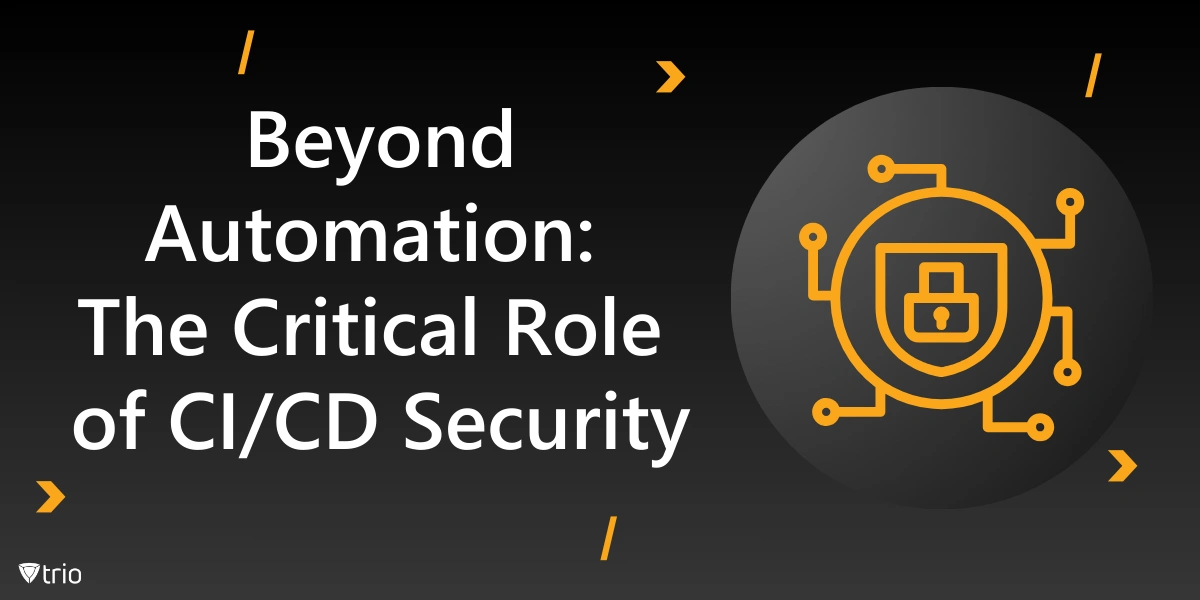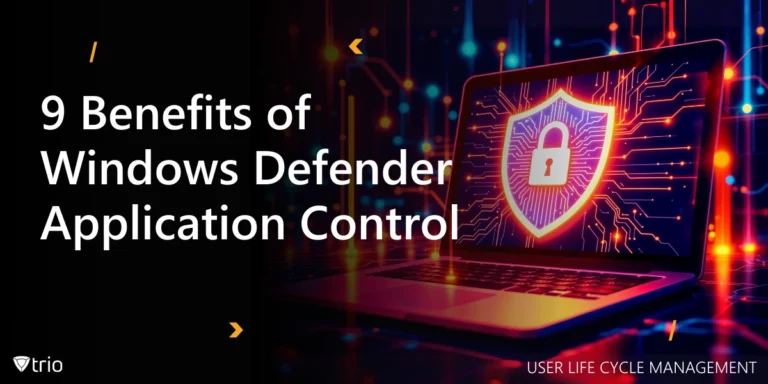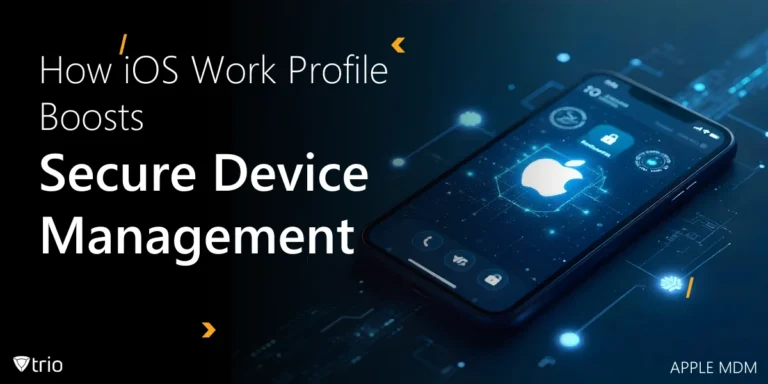In the world of modern software development, CI/CD security plays an important role in safeguarding the stages of the CI/CD pipeline. As DevOps teams adopt automated processes to accelerate the software development process, ensuring security early in the development cycle is more critical than ever.
The CI/CD process, which stands for Continuous Integration and Continuous Deployment, involves building, testing, and deployment in a streamlined flow. However, the fast-paced nature of these activities can expose production environments to vulnerabilities if security measures are not integrated effectively. This blog explores CI/CD security best practices, CI/CD security examples, and strategies for reducing the risk in your pipeline.
Why CI/CD Security Matters
As organizations embrace faster development cycles and the automation of their CI/CD process, security must evolve to keep pace. Without proper attention to security measures, the very speed that makes CI/CD attractive can also become a liability.
Protecting modern software development is essential to ensure that the benefits of automation and continuous delivery don’t come at the cost of security.
Protecting the Heart of Modern Software Development
The CI/CD pipeline is the backbone of modern software delivery. By automating repetitive tasks and improving feedback loops, it ensures faster delivery of high-quality applications. However, the complexity of this process makes it a prime target for security threats.
Implementing robust DevSecOps practices ensures that security is embedded into your pipeline. It’s also vital to incorporate security assessment tools to detect and mitigate vulnerabilities before they escalate. Organizations that neglect vulnerability management often find themselves exposed to risks that could compromise the efficiency and reliability of their systems.
The Cost of Neglecting Security
Neglecting CI/CD security can lead to significant downtime, data breaches, or loss of customer trust. As software moves seamlessly from development to production, weak security protocols can result in vulnerabilities slipping through the cracks. Integrating a data breach response plan ensures your organization is prepared to act swiftly when issues arise.
CI/CD Security Best Practices
Once you understand the critical importance of CI/CD security, the next step is to implement actionable best practices that can help safeguard your pipeline. By integrating security at every stage of the development cycle, from code creation to deployment, you can minimize risks and strengthen your system’s defenses.
Embed Security in the Development Cycle
To protect your CI/CD pipeline, start by implementing code reviews and unit tests that incorporate security checks. A robust CI/CD security checklist should include verifying dependencies, scanning code for vulnerabilities, and restricting access to sensitive data.
Additionally, adopting mobile threat defense (MTD) can protect mobile devices in the CI/CD process, especially when they are used in testing or deployment environments. This ensures that even mobile endpoints are secure from vulnerabilities.
Secure Your CI Infrastructure
Your CI infrastructure is as crucial as your application. Ensure that version control systems are configured securely, and access controls are in place. Only authorized team members should have the ability to modify configurations, or trigger builds in the pipeline.
Additionally, device attestation can provide assurance that hardware and software used in your pipeline meets your organization’s security standards, reducing vulnerabilities that originate from compromised devices.

Tools to Enhance CI/CD Security
To further strengthen your CI/CD security, it’s crucial to leverage the right tools that can help detect, prevent, and mitigate potential threats. The right set of CI/CD security tools can enhance the automation of security checks and safeguard your development pipeline.
Selecting the Right CI/CD Security Tools
Choosing the right CI/CD security tools is important for a secure software development process. Popular options include:
- Static Application Security Testing (SAST) tools for early-stage code scanning.
- Dynamic Application Security Testing (DAST) tools to evaluate runtime vulnerabilities.
- Secrets detection tools to prevent sensitive data leaks in your version control systems.
These tools, combined with disaster recovery strategies, can help maintain pipeline continuity during potential disruptions caused by security breaches or system failures.
CI/CD Security Examples in Action
Organizations like Netflix and Spotify leverage layered security approaches to fortify their pipelines. By integrating confidentiality best practices and using proactive monitoring tools, they reduce vulnerabilities and protect their production environments.
Addressing OWASP Top 10 CI/CD Security Risks
To proactively secure your CI/CD pipeline, it’s crucial to understand the most common risks and how to mitigate them effectively. The OWASP Top 10 CI/CD Security Risks provide guidance on where vulnerabilities are most likely to emerge. By identifying and addressing these risks early, you can significantly reduce the likelihood of breaches and disruptions in your software delivery process.
Understanding Key Risks
The Open Web Application Security Project (OWASP) has outlined the Top 10 CI/CD Security Risks, which focus on critical vulnerabilities such as misconfigurations, insufficient access controls, and insecure dependencies.
- Insufficient Flow Control Mechanisms: This refers to the lack of proper controls to manage the flow of code and artifacts through the CI/CD pipeline. This can lead to unauthorized access, tampering, or deployment of malicious code.
- Inadequate Identity and Access Management: Weak or misconfigured identity and access management (IAM) practices can allow unauthorized individuals to access sensitive CI/CD systems and data.
- Dependency Chain Abuse: Exploiting vulnerabilities in third-party dependencies can compromise the security of the entire CI/CD pipeline.
- Poisoned Pipeline Execution (PPE): Injecting malicious code into the CI/CD pipeline to compromise the build process and deploy malicious artifacts.
- Insufficient PBAC (Pipeline-Based Access Controls): Lack of granular access controls based on the pipeline stage and user roles can lead to unauthorized actions within the pipeline.
- Insufficient Credential Hygiene: Poor management of secrets and credentials, such as storing them in plain text or using weak passwords, can expose the CI/CD pipeline to attacks.
- Insecure System Configuration: Misconfigured CI/CD systems with default settings or weak security configurations can create vulnerabilities that can be exploited by attackers.
- Ungoverned Usage of 3rd Party Services: Using third-party services without proper security checks and controls can introduce security risks into the CI/CD pipeline.
- Improper Artifact Integrity Validation: Failing to verify the integrity of artifacts throughout the CI/CD pipeline can lead to the deployment of tampered or malicious code.
- Insufficient Logging and Visibility: Lack of adequate logging and monitoring can make it difficult to detect and respond to security incidents within the CI/CD pipeline.
Recognizing these risks and understanding their impact on your pipeline is key to strengthening your software supply chain. With this knowledge, you can implement targeted measures to protect your CI/CD processes from potential threats.
How to Mitigate These Threats
One of the most effective ways to address these risks is through continuous pipeline monitoring. Real-time insights allow for rapid detection and response to anomalies, while automated alerts keep your operations team informed of potential breaches. By integrating a robust cybersecurity incident response plan, you can strengthen your overall defense and ensure swift action when threats arise.
Furthermore, proactive measures such as SQL injection prevention and regular dependency updates play a crucial role in mitigating many of these risks. Continuously scanning your pipeline for authentication bypass vulnerabilities ensures that any unauthorized access is quickly identified and addressed, safeguarding your systems from exploitation.

How Trio Can Enhance Your CI/CD Security
As a comprehensive and simplified MDM solution, Trio empowers organizations to protect their CI infrastructure and CI/CD pipelines. By enabling centralized device management and enforcing security policies, Trio ensures that devices involved in the development cycle remain compliant and secure.
Additionally, Trio integrates seamlessly with CI/CD security tools, providing an added layer of protection to your production environments. With Trio, DevOps teams can focus on innovation without compromising on security.
Ready to Strengthen Your CI/CD Security?
Discover how Trio can streamline and secure your CI/CD process. Book a free demo today and elevate your pipeline’s security!
See Trio in Action: Get Your Free Trial Now!
Conclusion
Securing your CI/CD pipeline is no longer optional in today’s fast-paced development landscape. By embedding security measures into every stage of the CI/CD process, using the right tools, and proactively addressing known risks, you can build a resilient system that withstands modern threats. And with solutions like Trio, taking your CI/CD security to the next level has never been easier.




